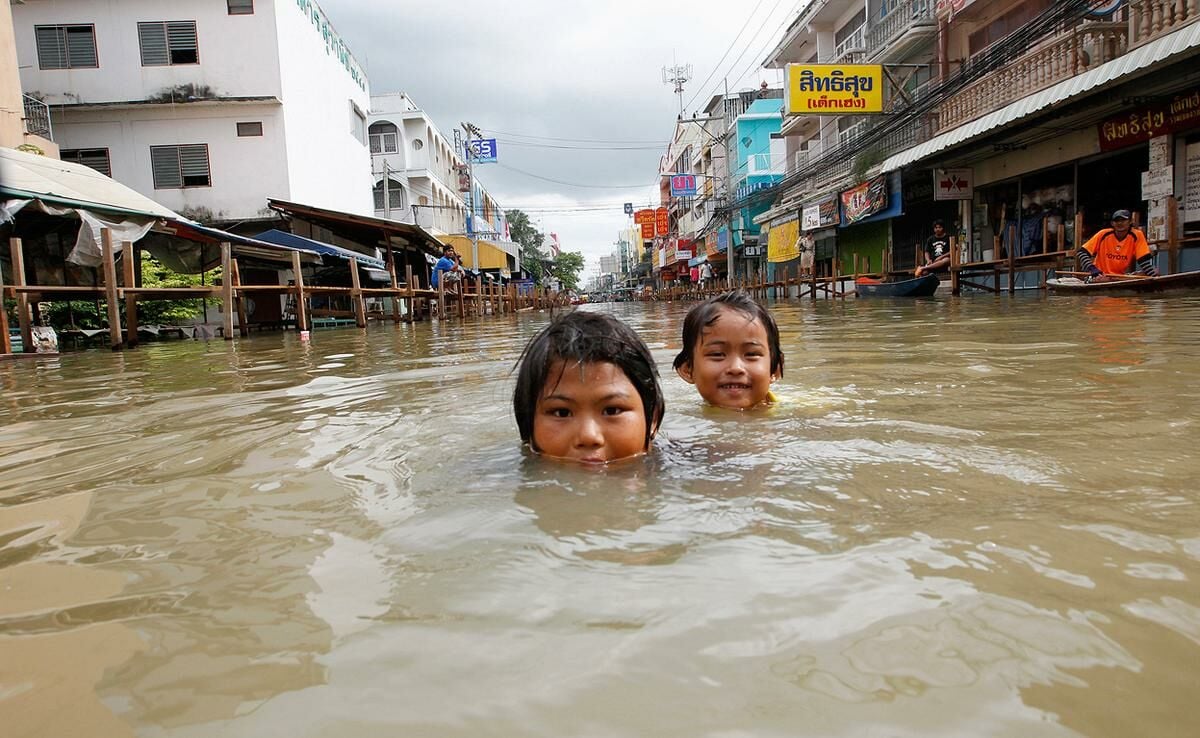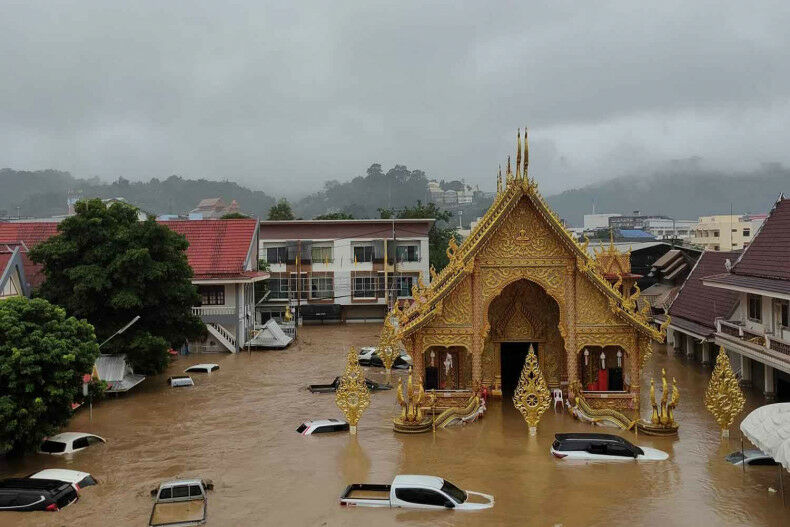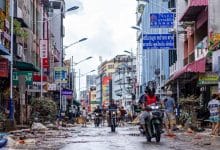Man-made moves make Thailand flood the news, says expert (video)

Pianporn “Pai” Deetes, Southeast Asia Programme Director for International Rivers, has pointed the finger of blame at human actions as major culprits of the floods that have unleashed chaos across Thailand this year.
The tragic toll includes over 50 deaths in the north of Thailand earlier this year and more than 25 recently in the south of the country.
Pianporn singled out deforestation, dams, and encroachment as the primary drivers of this watery mayhem. The rampant clearing of forests, especially for corn grown as animal feed, is a double-edged sword, sparking both flooding and the annual PM2.5 haze that chokes northern Thailand. Locals find themselves in a dire state of “half flood, half haze,” according to Pianporn.
The muddied waters are further stirred by mining activity, especially in Myanmar’s Shan State. Pianporn revealed that satellite images have exposed illegal mining, possibly for gold, which has surged following the coup in Myanmar three years ago. The lack of journalism and civil society presence in the region cloaks such illicit operations.
“In Myanmar, there are fewer reports because of the absence of journalism or civil society space. So there’s lots of activities, like open sites for mining in the upper reaches of the Mae Sai River and plantations, monocrop plantations that can be a major cause of the mud flood in Mae Sai district of Chiang Rai and Tachileik district of Myanmar.”
Deforestation heaps mud and sediment onto cities, villages, and towns, amplifying the flood’s devastation. Recovery in Mae Sai is ongoing, with heavy machinery clearing mud from homes.

Adding to the deluge, the swelling number of upstream dams also takes a toll on northern Thailand. Pianporn stressed that recent flooding ties directly to dam operations on the Mekong River, notably due to rainfall in southern Yunnan, China, prompting water releases that slow floodwater drainage in places like Chiang Rai.
“The flood that happened during the past two months has something to do with dams on the Mekong too, because that rain also happened in southern Yunnan [in China] and the dams up there have to release water.”
Pianporn urged governments, especially China, to work together on these pressing issues, as shared water resources necessitate joint management.
Encroachment along riverbanks is another key factor. Pianporn recounted how a historian revealed that parts of Chiang Rai, including her foundation’s office, sit atop former river courses, unknown to many residents.
“I discussed with one historian. The real cause of this flood in Chiang Rai city. He showed the old imagery of ancient Chiang Rai, even my foundation, my mum’s foundation office in the outskirts of Chiang Rai town, it happens to be on the old river course.”
Pianporn dismissed flood walls as a fix, warning they could backfire if breached. Instead, she champions nature-based solutions like “sponge cities” that harmonise urban areas with natural water bodies.
In some cases, relocating communities from high-risk zones might be essential, but Pianporn insists this be done inclusively, with fair compensation for those affected.
The urgent priority, according to Pianporn, is to address these challenges by partnering with nature and engaging all stakeholders, reported Bangkok Post.
“I think the most important thing is to recognise the real problem, identify the key factors, and consult with multiple stakeholders, the experts, the engineers, the farmers, the urban dwellers and academics.”
Pianporn emphasised the need for collective action and inclusive dialogue among diverse parties to forge sustainable solutions to this escalating crisis.
What Other Media Are Saying
- Voice of America reports over 30,000 people displaced by severe flooding in southern Thailand, highlighting government efforts for relief while warning of intensified climate impacts leading to more frequent disasters. (read more)
- Bangkok Post highlights Thailand’s severe flooding crisis in 2024, attributing it to upstream dam releases, river encroachment, and deforestation, while emphasising environmental management’s crucial role in preventing future disasters. (read more)
Frequently Asked Questions
Here are some common questions asked about this news.
Why might deforestation for agriculture be a double-edged sword for Thailand?
Deforestation contributes to both flooding and air pollution, creating a cycle of environmental challenges that impact communities year-round.
How do upstream dam operations in China influence flooding in northern Thailand?
Dams release water during heavy rains, slowing drainage and exacerbating flooding downstream, highlighting the need for international cooperation.
What role do historical river courses play in modern flooding issues in Chiang Rai?
Encroachment on ancient river paths, now urban areas, reveals the importance of historical knowledge in urban planning and flood prevention.
What if communities were relocated from high-risk flood zones in Thailand?
Relocation could reduce risk but requires fair compensation and inclusive planning to ensure community well-being and support.
How might ‘sponge cities’ offer a solution to Thailand’s flooding woes?
Integrating urban areas with natural water bodies can absorb excess water, reducing flood impact and promoting sustainable urban development.
Latest Thailand News
Follow The Thaiger on Google News:


























